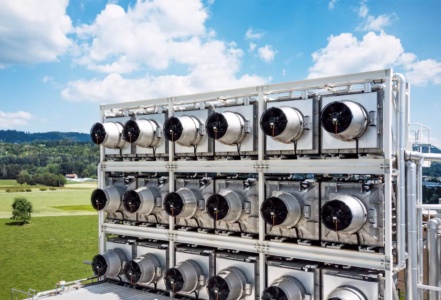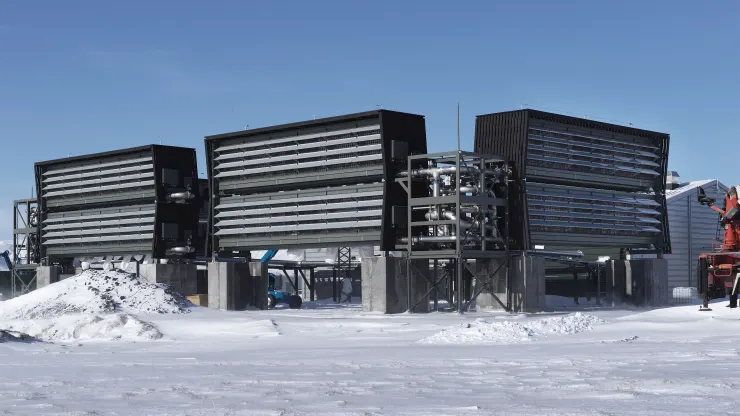
Microsoft, Stripe and Shopify are the first companies to pay Climeworks upfront for CO2 filtration and subsequent storage. The Swiss company said that the success of the process has already been confirmed by third-party auditors.

Christoph Gebald and Jan Wurtzbacher founded Climeworks in 2009, which at the time existed as a subsidiary of ETH Zürich, the main technical university in Switzerland’s largest city. The startup’s first plant implementing direct CO2 removal technology (Direct Air Capture, DAC) called Orca was opened in 2021.
DAC machines capture CO2 from the air and place it in basalt rocks, preventing the greenhouse gas from lingering in the atmosphere and warming the planet. Actually, the technology imitates the “work” of trees that absorb CO2.

However, there was a problem in controlling the process that could actually confirm the effective operation of direct air capture units. The auditing company DNV has been involved in the development of evaluation criteria for many years and now, for the first time in the industry, it has certified CO2 removal for Climeworks.
The methodology (which estimates how much carbon dioxide is extracted, transported and sent to permanent storage) is now publicly available and will be used to verify future CO2 “batches”. Climeworks declined to provide information on the amount of carbon dioxide captured in the first batch, citing confidentiality agreements with customers.
But Microsoft, for example, as early as 2020 promised to gradually reduce all its historical emissions. According to its latest environmental sustainability report, the company has contracts to remove at least 2.5 million tonnes of CO2 (about 18% of total emissions in fiscal 2021), including both direct air capture and forestry projects.
However, the current Climeworks network does not yet have sufficient capacity to achieve Microsoft’s ultimate goal. Orca, for example, can catch only 4,000 tons annually (equivalent to the annual emissions of about 800 passenger cars); and all operating DAC plants in the world can capture 0.01 million tons of CO2 per year.

In June, Climeworks announced the start of construction on its second commercial plant in Iceland, which will capture and store 36,000 tons of carbon dioxide per year.
However, even after its commissioning, the operation of both facilities will account for a tiny percentage of annual global carbon dioxide emissions. According to the International Energy Agency, in 2021 they reached a record level of 36.3 billion tons.

The cost of removing and storing carbon dioxide for corporate customers is confidential and depends on how much carbon dioxide the companies want to remove and over what period of time. But the total cost of removing CO2 is several hundred dollars per ton. Individuals can also pay Climeworks to remove carbon dioxide to offset their personal emissions.
Some are skeptical about using vast amounts of energy and resources to build machines to combat climate change. But Climeworks in Iceland runs on renewable geothermal energy (thus producing minimal emissions); another startup pumps CO2 underground after dissolving it in large amounts of water.
The industry says that DAC technology is one of the few solutions for large-scale CO2 removal that can reduce unavoidable emissions, and that the costs of using it will gradually decrease. The leaders of such startups hope for a future in which people pay to remove carbon dioxide, as they currently pay for garbage collection.
Source: The Verge, CNBC, WSJ




